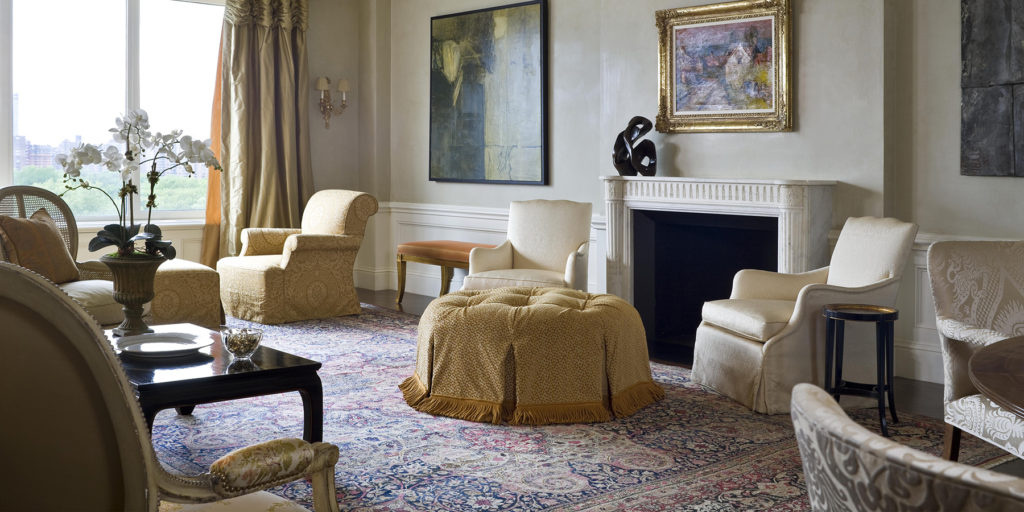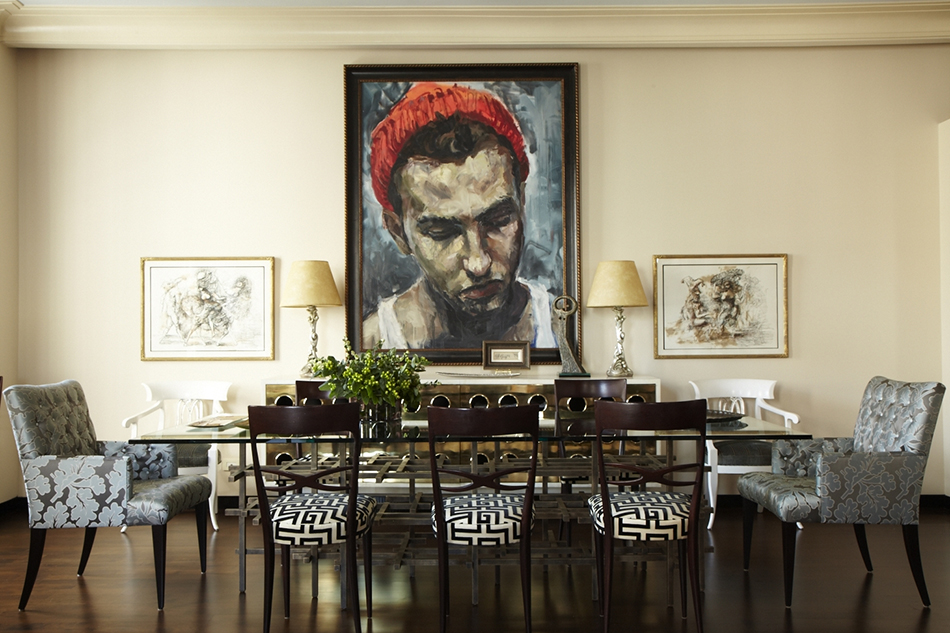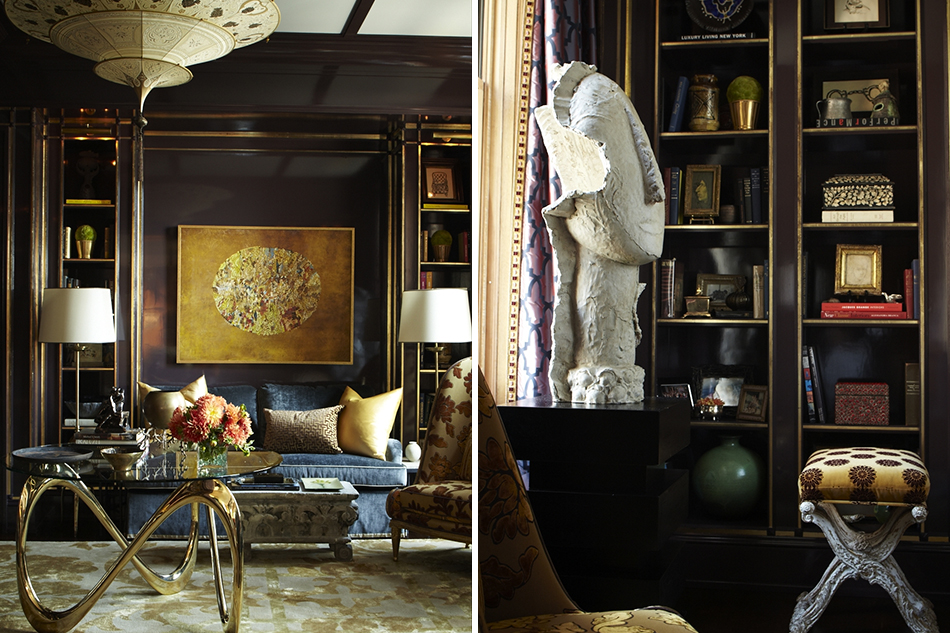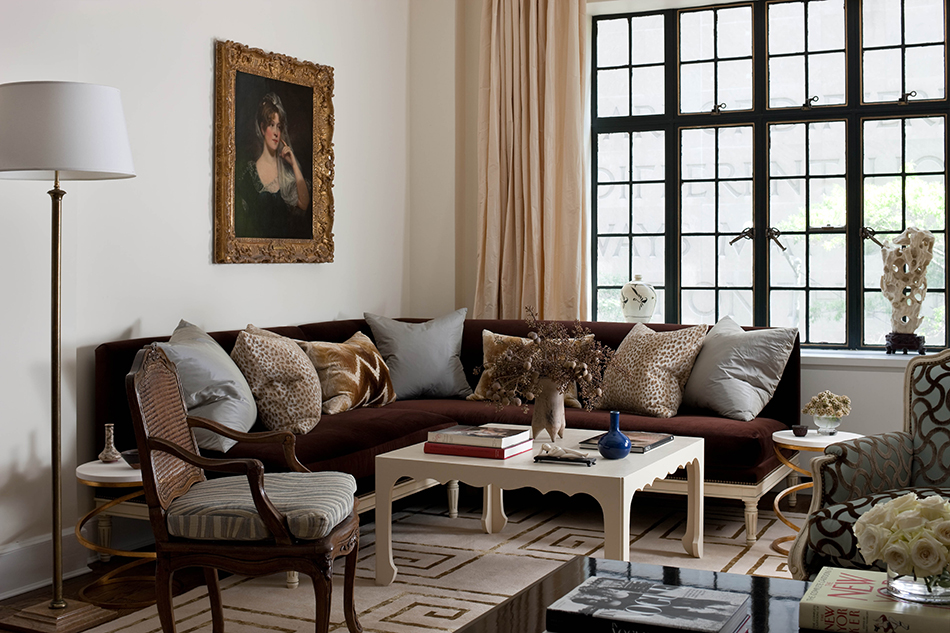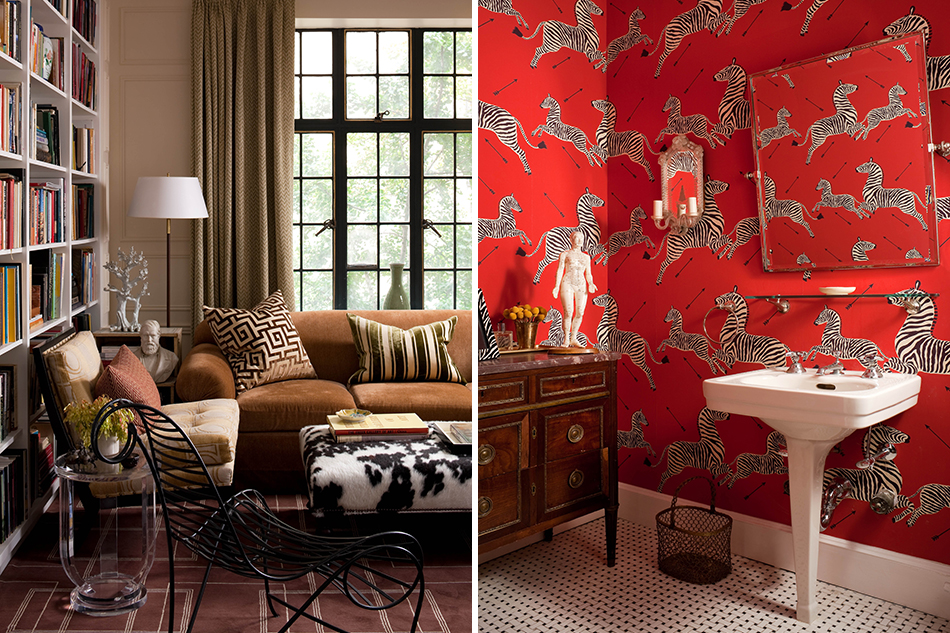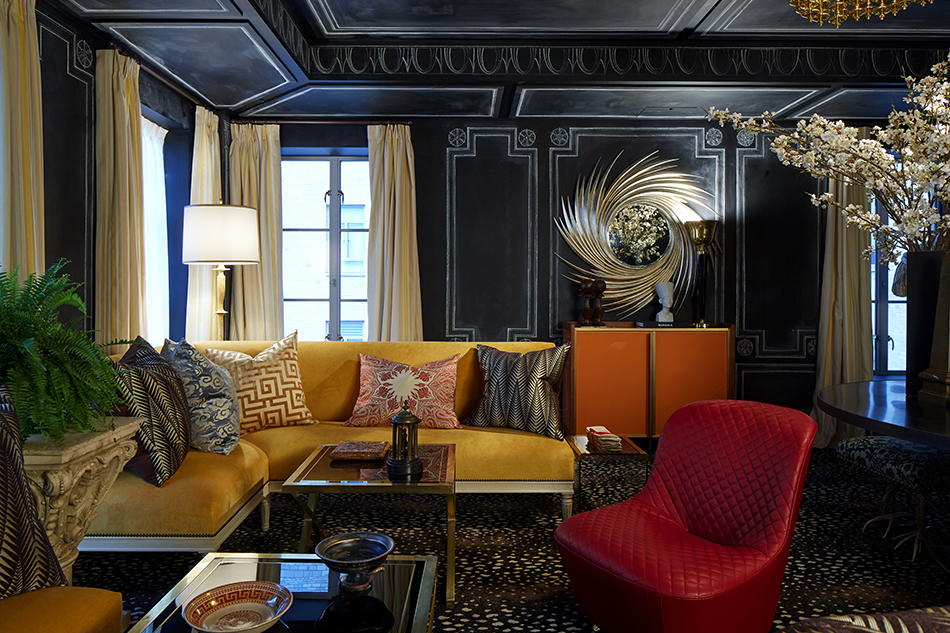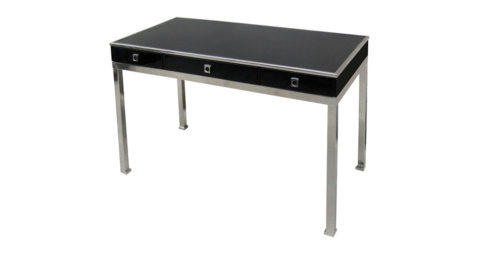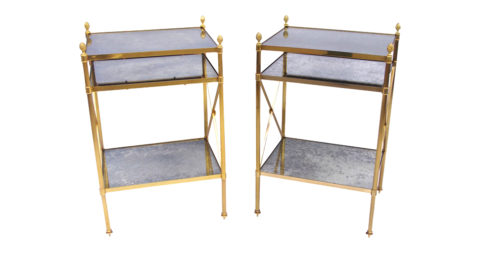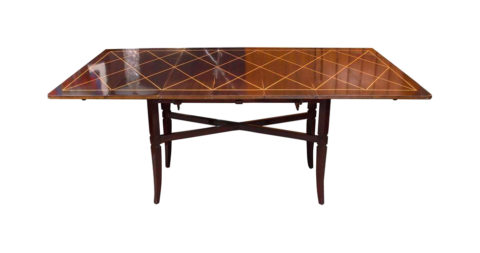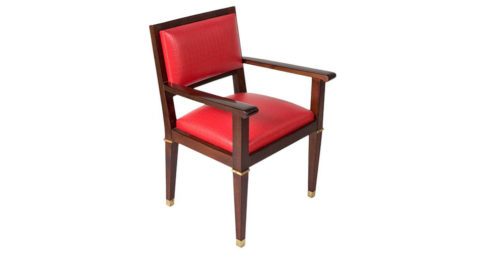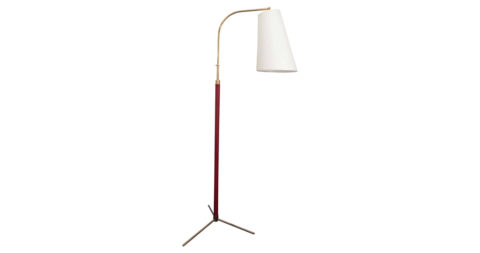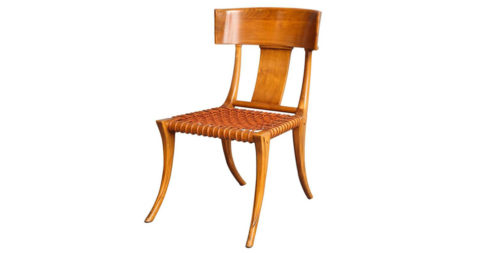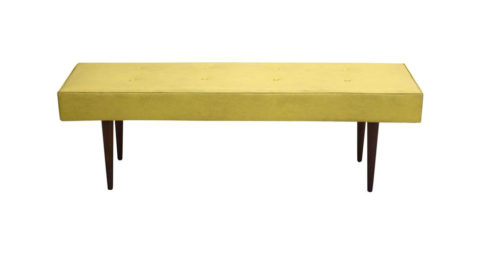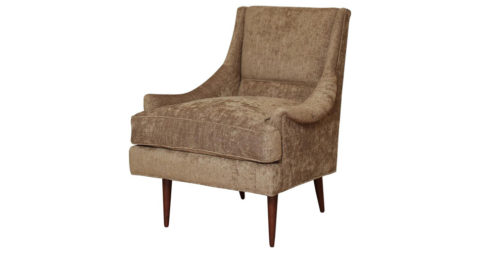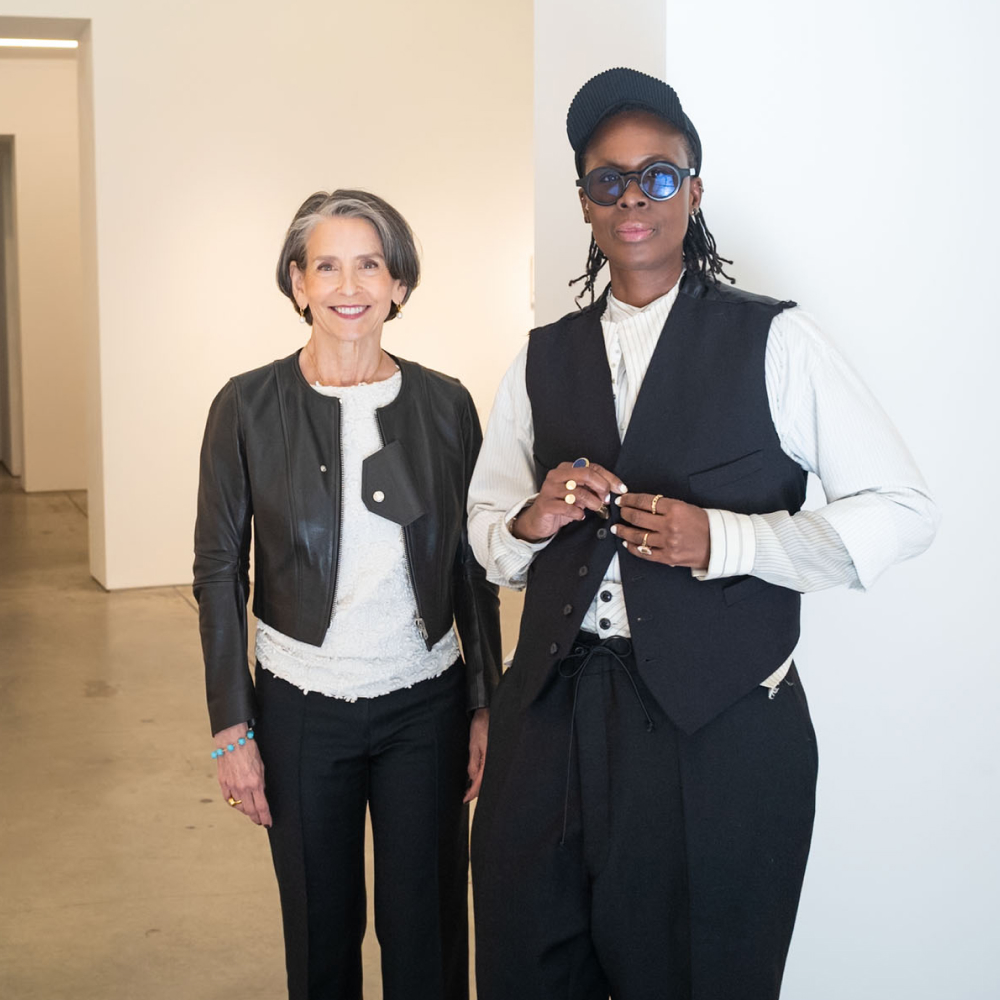
November 14, 2016The Canadian-born, Manhattan-based designer Garrow Kedigian respects historic architecture and design features but adds modern touches to keep things fresh (portrait by Jeff Gahres). Top: Kedigian designed the upholstered chairs in this Upper East Side living room, which includes a side table from Lee Calicchio and Donghia curtain fabric. Photo by Bruce Buck
It seems fitting that Garrow Kedigian lives in a Park Avenue apartment that was once owned by Fred Astaire. “I think I might have done well in another era,” says the 43-year-old New York– and Montreal-based designer, “one where you wore a suit and tie every day no matter what you were doing.”
Although he grew up in Montreal, where he still owns a historic townhouse, Kedigian’s elegant approach to design has been strongly influenced by the summers he spent each year with his French maternal grandmother in her spacious Parisian apartment, a place where the furniture had acquired both a patina and a narrative.
“Americans are obsessed with everything being new, new, new,” he says. “Decorating is a long process — the reality is that it won’t be entirely finished. Ever.”
An architect by training, Kedigian likes to work first on a project’s structural elements. His designs almost always include cove moldings to cheat the ceiling height, painted wall paneling to add architecture to a room and widened doorways. With older apartments, his goal is to renovate respectfully. The first thing he asked his contractor to do in his own apartment renovation, for instance, was to lay down Masonite to protect the age-darkened parquet flooring that another owner might have sanded. “You can never recreate this kind of gorgeous patina on parquet floors,” he notes, not to mention that Astaire might have danced on them.
But too much nostalgia, Kedigian acknowledges, can be stifling. The trick is to make the old look new again, an effect often achieved by setting up contrasts to create a streamlined classic. He may upholster the seat cushions on a pair of 19th-century oval-backed chairs, for example, in slick licorice-black leather or repurpose an antique Chinese daybed as a coffee table.

In Kedigian’s historic Montreal townhouse, the dining room walls are painted a rich teal, and a mid-century modern wooden lantern hangs above a glass-topped Andrew Martin dining table with a chrome base. The portrait of a young Napoléon above the fireplace was painted by Kedigian. Photo by Paul Raeside
Having painted all his life, Kedigian is confident about color. “I never do white walls,” he says. “I hate white.” His palette seems derived from the tints and textures of old book bindings: polished leathery browns, teal blues, high-gloss ivory and oxblood, often enhanced by trace lines of gilding within wall panels. “Color can get out of control if it’s too primary. . . . I don’t like anything to be too playful.”
If that makes Kedigian sound stern, he isn’t — he loves to throw a good party — but he’s definitely disciplined. He rises at 4:30 a.m. each day, a habit from when he was training to be a competitive figure skater. And on Sundays, he sets aside time to play his Hazelton grand piano. At present he’s working on Claude Debussy’s Clair de Lune.
“It’s not just about decorating. It’s about how happiness lies in your perceptions, how you choose to experience things,” Kedigian says. If those summers with his maternal grandmother in Paris helped to train his eye, then his paternal grandmother, an Armenian genocide survivor, taught him a further lesson on the subject. “She told me, ‘Don’t ever not notice the beauty in the world around you.’ ”
Early influences:
At age seven, I embarked upon redecorating my parents’ living room, which also involved putting scissors to the curtains. That room remains in the same layout to this day. I attended the McGill School of Architecture, in Montreal, where I learned to appreciate classical architecture. The designer William Hodgins, for whom I worked in Boston for six years, had the greatest influence on my career.

Kedigian designed the Carr-style sofa in this Upper East Side living room. The homeowners’ bergère chair was reupholstered and painted white. Photo by Bruce Buck
Big break:
I met a designer at a Christmas party in Palm Beach just as I had decided to move to New York. She took a shine to me and, several months later, referred one of her own clients to me. All they wanted was a small renovation of their bathrooms so that they could sell the apartment, but when they bought their new, huge apartment, they gave me the job. It was my first extensive solo project.
Inspired by:
Because I am trained as an architect, oftentimes it’s the architecture of the space that guides me.
Current playlist:
I have WQXR, New York’s classical radio station, playing in the background at all times when I am at home and when I’m at work. I studied the piano for almost twelve years, and I am also a huge opera fan. This past year, I was able to make time for some of the best operatic performances I have seen: The Pearl Fishers, La Donna del Lago, The Magic Flute, and my favorite of all time, La Cenerentola by Rossini.
Favorite artist:
Géricault is my favorite French artist, and I love Caravaggio. At the top of the contemporary art list: Damien Hirst and Jean-Michel Basquiat.

For this year’s Kips Bay Decorator Show House, in New York, Kedigian created a room where he imagined Napoléon would relax. The round center table is from Balsamo, the carpet is by Stark, and the antler benches were designed by Kedigian. The whimsical chalk panel lines on the walls are by artist Rajiv Surendra. Photo by Jeff Gahres
Designers I most admire:
Jeffrey Bilhuber, Steven Gambrel, Alexa Hampton, Matthew Patrick Smyth and Jacques Grange.
Favorite summer getaway:
My house in Montreal.
Drink of choice:
Shirley Temple
Watering hole:
The Tap Room at the University Club in New York.
Go-to place for dinner:
The Mark Restaurant, a Jean-Georges restaurant at the Mark Hotel, which is just down the street from me. I find myself there at least once a week.
On the nightstand:
I always keep a pad and pencil by my bedside so if I wake up with an idea, I can jot it down immediately. It actually helps me sleep better knowing that I have that pad and pencil at the ready.
